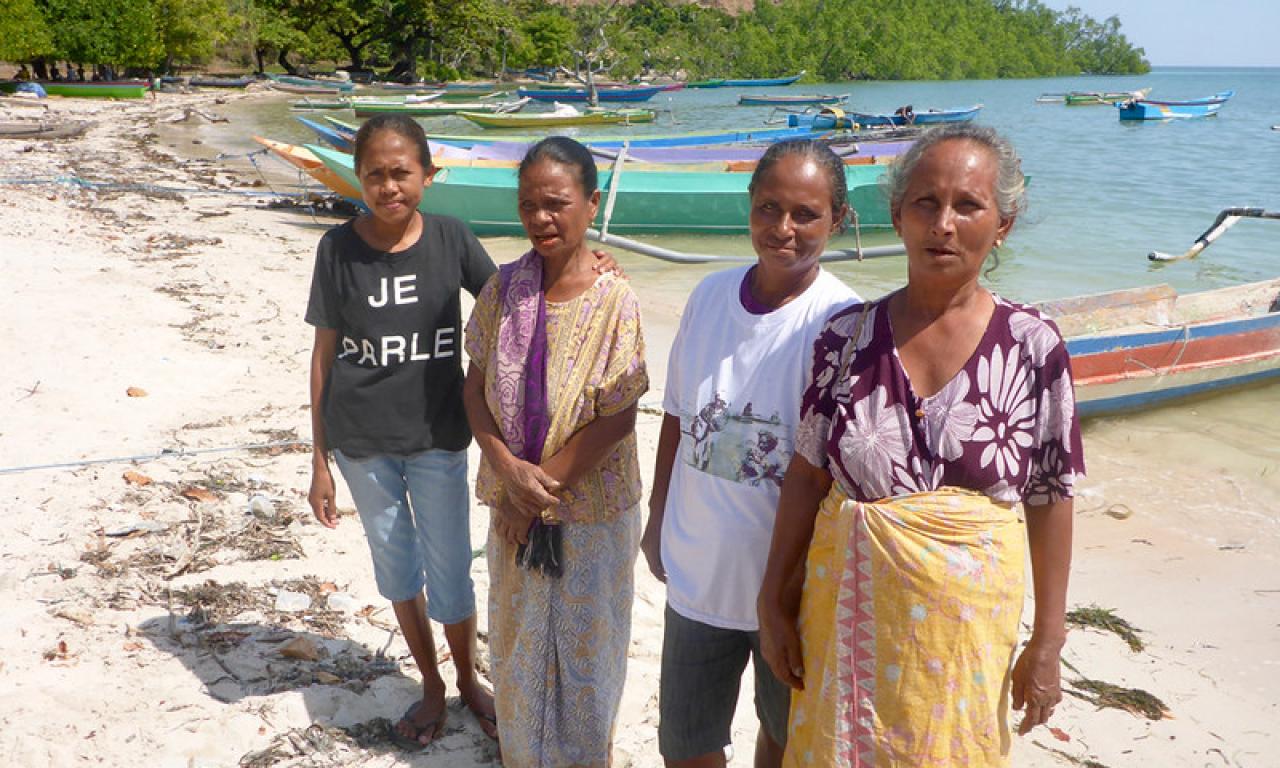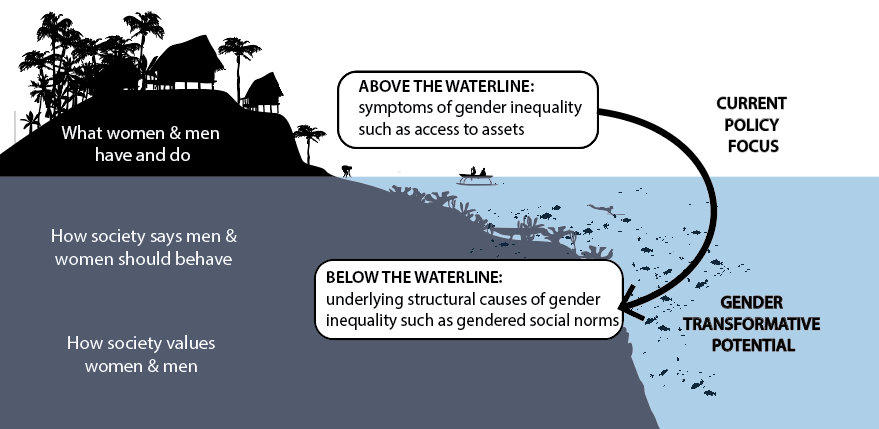
- Gender equality matters for climate change adaptation and mitigation in aquatic food systems
- Realizing gender equality requires addressing both symptoms and underlying causes
- This op-ed outlines next steps for policymakers and practitioners at multiple scales to achieve gender equitable climate mitigation
Climate change is one of our most critical and complex global challenges. Sea-level rise and coastal flooding are projected to impact hundreds of millions of people, and climate-induced changes in tropical marine fisheries threaten global food security. Moreover, certain people are more vulnerable to the effects of climate change than others, which only serves to compound existing inequalities.
To implement effective climate adaptation and mitigation, these underlying inequalities must be addressed, particularly in regards to gender.
Gender equality matters for climate change adaptation and mitigation
Gender, or the social expectations of what it is to be a woman or man, shapes how individuals experience climate change and their different abilities to adapt and innovate in the face of change. For example, in climate change hotspots experiencing food or economic insecurity, men are more likely to migrate to urban areas to find work, while women tend to remain at work in poorer conditions.
Gender inequality and discrimination exacerbate vulnerability to climate change in aquatic food systems and undermine ocean economies. Working towards gender equality in climate change adaptation is thus critical for more effective, holistic and equitable outcomes.
When it comes to addressing the underlying causes of gender inequality, systemic problems persist. Four key assumptions are hindering progress towards gender equality in food systems experiencing climate change:
- Gender equality is a women’s issue
- Women and men are homogenous groups
- Women are innately caring and connected to the environment
- Gender equality is a numbers game
Together, these assumptions are compounded and reinforced when gender equality efforts are restricted in funding, pursued only over short time frames, are only rhetorical or if gender experts are undermined.
As a result, many climate change policies, investments and efforts continue to address gender inequality symptoms ‘above the waterline,’ or only problems at the surface as opposed to the underlying causes.

Towards gender transformative change
To address persistent inequalities, climate change adaptation and mitigation efforts need to actively address and transform the invisible root causes of gender inequality by going ‘below the waterline.’ How? One avenue is through gender transformative approaches.
Gender transformative approaches (GTA) explicitly seek to reflect upon, challenge and transform unequal norms, power relations and structures. Successful gender transformative approaches require commitment, time, gender expertise, deep understanding of context-specificity and skilled facilitation and reflection.
For example, reduce post-harvest fish losses, used a GTA to challenge social norms and power relations through communication (e.g., drama skits), discussions and critical reflection. It successfully reduced post-harvest losses, changed gender attitudes, and increased women’s participation and access to resources.
Specifically, gender transformative approaches focus holistically on challenging and transforming (invisible) structural barriers, changing gender relations and building agency of those less powerful. They seek to engage both men and women as agents of change, as opposed to placing the burden of equality solely on women.
Gender-transformative approaches ultimately ensure activities and actions meet the needs of people of all genders and across all social divides.
Next steps?
To support gender equality in climate adaptation in aquatic food systems, researchers and practitioners must address the informal and formal root causes of gender inequality as well as the symptoms.
For instance, women play a critical role in aquatic food supply chains, though they typically perform informal postharvest activities like fish processing and trade, so their contributions are persistently undervalued. It is thus necessary to collect gender-disaggregated data to demonstrate women’s true contributions to food and nutrition security and economies; accurate data is also imperative to provide women aquatic food actors with context-specific support in climate adaptation and mitigation.
Integrating GTAs with technological innovations is one pathway to scaling up success with climate adaptation and mitigation. For instance, The project diagnosed gender needs, engaged with both women and men to critically reflect on gender norms, ultimately increasing household food security and women’s status, as well as reducing gendered barriers to participation.
It is further critical to develop policies and practices that support gender equality as a goal in and of itself, as opposed to a secondary goal to be tacked-on to other aims. This will prioritize gender equality from the onset of a project or intervention.
Ultimately, the private and public sector must ensure adequate funding, resources, and timeframes are dedicated to gender equality initiatives, and that policy-making processes themselves are gender equitable, balancing top-down commitment to gender equality with bottom-up inclusion.
Further reading:
